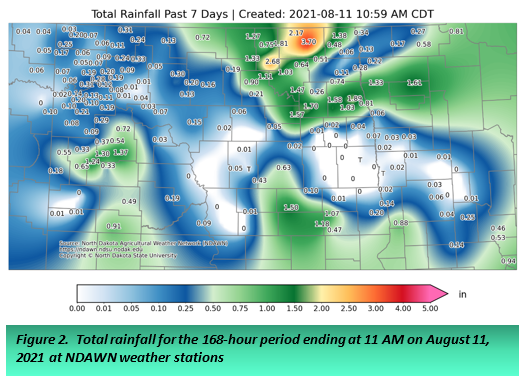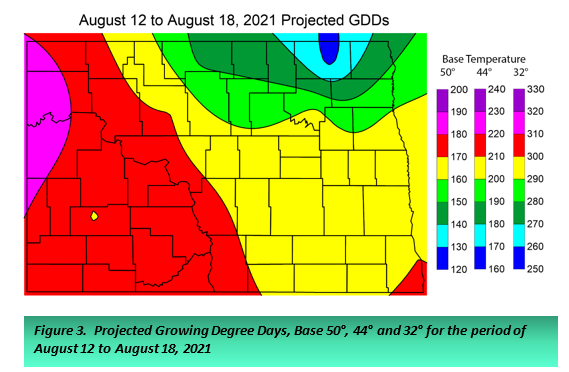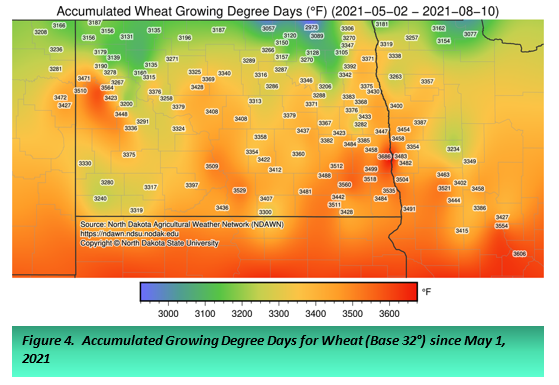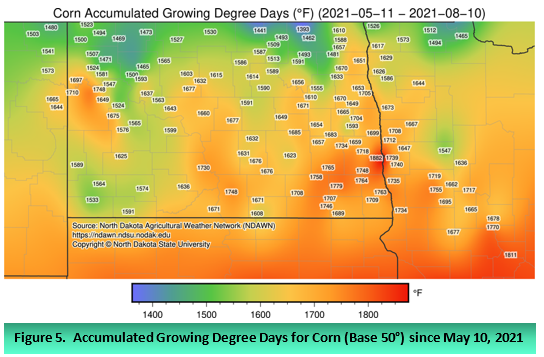Weather Forecast (08/12/21)
This past week the temperatures across the North Dakota Agricultural Weather Network (NDAWN) finished near average, yet, many days were either well above or well below average (Figure 1). These next 7 days will start off cool and transition to well above average temperatures, especially this weekend into early next week. Although some spotty rain activity may develop during this transitions from cooler to warmer air, most locations may not record any rainfall until the middle to end of next week.

There were two major precipitation events during this past week that mainly impacted southern and northeastern North Dakota (Figure 2). Both brought localized heavy rain, although rainfall in those pockets did not necessarily get recorded by NDAWN stations. Many locations near the I94 corridor, from Bismarck to Fargo, were missed by both thunderstorm complexes and, in turn, recorded little or no precipitation this past week.

The projected growing degree days (GDDs) base 50°, 44° and 32° for the period of August 12 through August 18, 2021 can be found in Figure 3. Another reminder that most GDD calculations are capped at 86°. These next 7 days may record several days beyond that level with some central and western NDAWN stations nearing triple digits on a couple of days.

Using May 1 as a planting date, the accumulated growing degree days for wheat (base temperature 32°) is given in Figure 4. You can calculate wheat growing degree days based on your exact planting date(s) here: https://ndawn.ndsu.nodak.edu/wheat-growing-degree-days.html

Using May 10 as a planting date, the accumulated growing degree days for corn (base temperature 50°) is given in Figure 5. You can calculate corn growing degree days based on your exact planting date(s) here: https://ndawn.ndsu.nodak.edu/corn-growing-degree-days.html.

Soybeans also use base 50° like corn, but NDAWN has a special tool for soybeans that, based on your planting date and cultivar, can estimate maturity dates based on average temperatures, as well as give you GDDs based on your planting date(s) you set. That tool can be found here: https://ndawn.ndsu.nodak.edu/soybean-growing-degree-days.html
